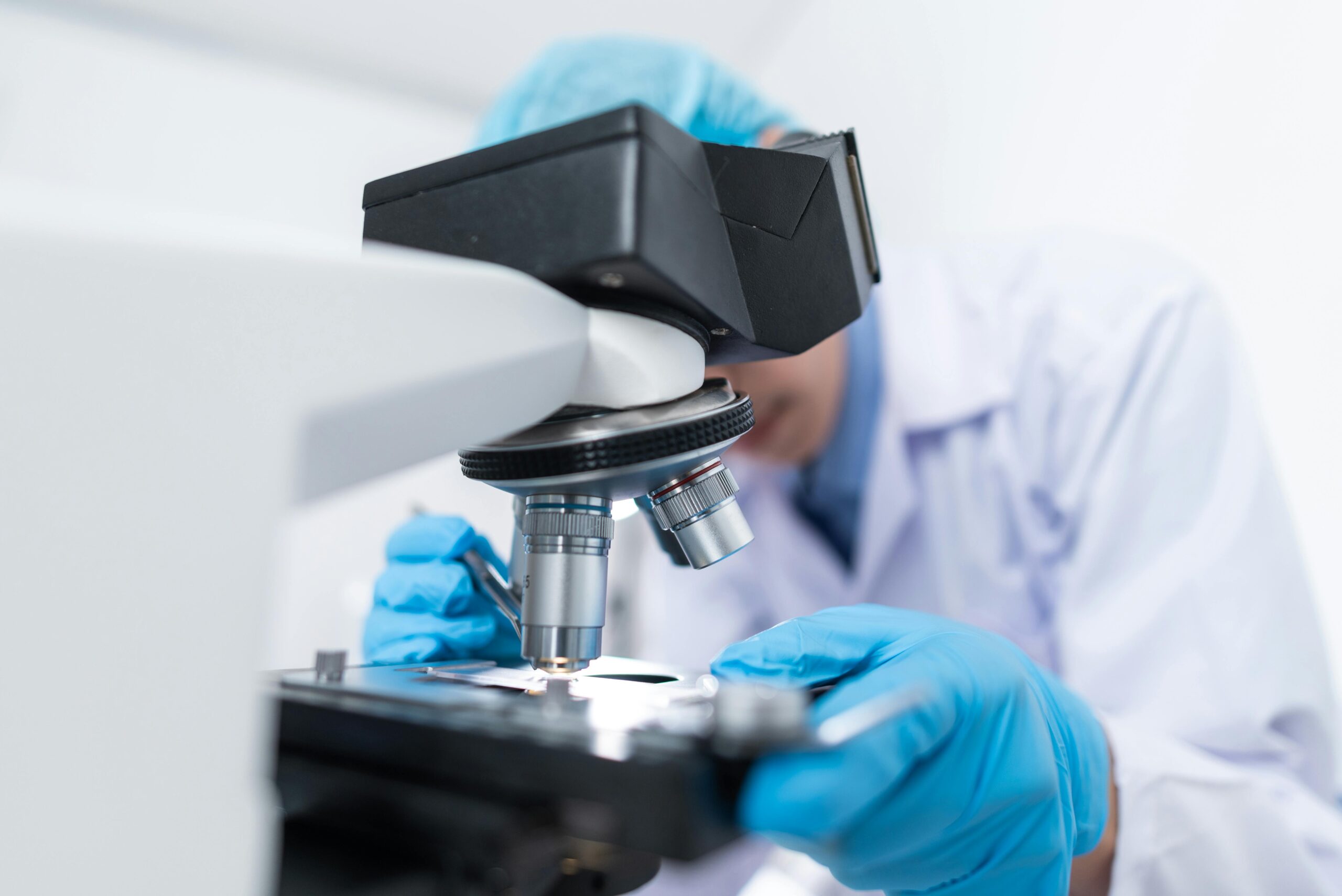The convergence of nanotechnology and regenerative medicine is ushering in an unprecedented era of medical innovation, where molecular-scale engineering meets biological healing to redefine what’s possible in tissue and organ restoration.
For decades, the dream of regenerating damaged tissues and organs has captivated scientists and clinicians alike. Traditional approaches to tissue engineering have faced significant limitations, from poor cell integration to inadequate vascularization. However, nanotechnology is now providing the tools and techniques necessary to overcome these longstanding challenges, offering hope to millions of patients worldwide who await life-saving transplants or suffer from degenerative conditions.
🔬 The Nanoscale Revolution in Regenerative Medicine
Nanotechnology operates at the scale where biology naturally functions—the realm of proteins, DNA, and cellular machinery. By engineering materials and devices at dimensions between 1 and 100 nanometers, researchers can now interact with biological systems in ways that were previously impossible. This precision allows for unprecedented control over how cells behave, grow, and organize themselves into functional tissues.
The human body itself is a marvel of nanoscale organization. Cell membranes are approximately 10 nanometers thick, while proteins range from 5 to 50 nanometers. By working at this scale, nanotechnology can seamlessly integrate with natural biological processes, creating scaffolds, delivering growth factors, and stimulating cellular responses with remarkable specificity.
Nanostructured Scaffolds: Building the Foundation for New Tissue
One of the most significant contributions of nanotechnology to tissue engineering is the development of advanced scaffolds that mimic the natural extracellular matrix. These three-dimensional structures provide the architectural framework upon which cells can attach, proliferate, and differentiate into functional tissue.
Traditional scaffolds often lacked the intricate nanoscale topography found in natural tissues. Modern nanoengineered scaffolds incorporate features such as nanofibers, nanotubes, and nanopatterns that closely replicate the native tissue environment. Electrospinning techniques can create polymer nanofibers with diameters as small as 50 nanometers, providing an ideal substrate for cell adhesion and migration.
Smart Biomaterials with Tailored Properties
Nanoengineered scaffolds can be designed with specific mechanical, chemical, and biological properties to suit different tissue types. For bone regeneration, scaffolds incorporating hydroxyapatite nanoparticles provide the necessary rigidity and mineral composition. For soft tissue applications, elastomeric nanofibers offer the flexibility and elasticity required for proper function.
These smart materials can also respond to environmental stimuli. Temperature-responsive nanomaterials can change their properties based on body heat, while pH-sensitive nanopolymers can alter their behavior in response to inflammation or infection. This responsiveness creates dynamic scaffolds that adapt to the healing process.
Nanomedicine: Targeted Delivery of Growth Factors and Therapeutics 💊
Effective tissue regeneration requires precise temporal and spatial control over the delivery of bioactive molecules. Growth factors, cytokines, and other signaling molecules must be delivered to specific locations at specific times to guide cellular behavior and tissue formation. Nanotechnology has revolutionized this delivery process through the development of sophisticated nanocarrier systems.
Nanoparticles can be engineered to encapsulate growth factors, protecting them from degradation while controlling their release kinetics. Liposomes, polymeric nanoparticles, and mesoporous silica nanoparticles can be designed to release their cargo over periods ranging from hours to months, providing sustained stimulation of regenerative processes.
Targeting Specific Cell Types and Tissues
Surface modification of nanoparticles with targeting ligands enables them to selectively bind to specific cell types or accumulate in particular tissues. For cardiac tissue engineering, nanoparticles conjugated with cardiac-specific peptides can deliver therapeutic agents directly to cardiomyocytes. This targeted approach minimizes off-target effects and maximizes therapeutic efficacy.
Magnetic nanoparticles offer another dimension of control, allowing external magnetic fields to guide nanocarriers to desired locations. This approach has shown promise in directing stem cells to sites of injury and concentrating growth factors in specific tissue regions.
Enhancing Vascularization: The Key to Large-Scale Tissue Engineering 🫀
One of the greatest challenges in tissue engineering has been creating adequate blood vessel networks to supply nutrients and oxygen to engineered tissues. Without proper vascularization, tissue constructs larger than a few millimeters cannot survive. Nanotechnology is providing innovative solutions to this critical problem.
Nanoparticles carrying pro-angiogenic factors such as vascular endothelial growth factor (VEGF) can stimulate the formation of new blood vessels. When incorporated into tissue scaffolds, these nanoparticles create gradients of growth factors that guide endothelial cells to form organized vascular networks.
Bioprinting with Nanomaterial Inks
Three-dimensional bioprinting combined with nanotechnology is enabling the creation of tissues with pre-formed vascular channels. Bioinks containing nanocellulose, carbon nanotubes, or other nanomaterials provide the structural integrity needed to print complex geometries while maintaining biocompatibility. These printed constructs can include channels that serve as templates for blood vessel formation.
Researchers have successfully printed cardiac tissue patches with integrated vasculature, bringing the possibility of large-scale organ printing closer to reality. The nanoscale control afforded by these technologies ensures that printed structures have the resolution necessary to mimic natural tissue architecture.
Stem Cell Engineering at the Nanoscale 🧬
Stem cells hold immense potential for regenerative medicine, but controlling their differentiation into specific cell types has been challenging. Nanotechnology provides powerful tools for directing stem cell fate through manipulation of their nanoscale environment.
The topography of substrates at the nanoscale profoundly influences stem cell behavior. Nanopatterns, nanopits, and nanogrooves can guide stem cells toward specific lineages without the need for chemical factors. For example, nanoscale roughness can promote osteogenic differentiation, while aligned nanofibers can direct neural differentiation.
Nanoparticle-Based Gene Delivery
Genetic modification of stem cells can enhance their regenerative capacity, but traditional viral vectors pose safety concerns. Nanoparticle-based gene delivery systems offer a safer alternative. Gold nanoparticles, lipid nanoparticles, and polymeric nanocarriers can efficiently deliver DNA, RNA, or gene-editing tools like CRISPR-Cas9 to stem cells.
These nanocarriers can be designed to release their genetic cargo in response to specific triggers, allowing precise temporal control over gene expression. This capability is particularly valuable for programming stem cells to differentiate along specific pathways or to secrete therapeutic factors at appropriate times during tissue regeneration.
Monitoring and Imaging with Nanosensors 📡
Understanding what happens inside engineered tissues is crucial for optimizing regenerative strategies. Nanotechnology enables real-time monitoring of tissue formation through the integration of nanosensors and imaging agents.
Quantum dots, fluorescent nanoparticles with unique optical properties, can be incorporated into scaffolds or cells to track their distribution and behavior over time. These nanoparticles can be imaged non-invasively, providing continuous feedback on tissue development without damaging the construct.
Biosensors for Metabolic Monitoring
Nanosensors can detect metabolic markers such as oxygen levels, pH, glucose concentration, and lactate production within engineered tissues. This information helps researchers understand whether tissues are receiving adequate nutrients and functioning properly. Carbon nanotube-based sensors and conducting polymer nanofibers can be woven into scaffolds to create “smart” tissue constructs that report their own health status.
Clinical Applications and Success Stories ✨
While much of nanotechnology-enhanced tissue engineering remains in experimental stages, several applications have reached clinical trials or even clinical practice. These early successes demonstrate the transformative potential of this technology.
Nanocrystalline silver-coated wound dressings represent one of the first commercial applications of nanotechnology in tissue repair. These dressings promote healing while preventing infection, significantly improving outcomes for burn victims and patients with chronic wounds.
Bone and Cartilage Regeneration
Orthopedic applications have been particularly receptive to nanotechnology. Bone grafts incorporating hydroxyapatite nanoparticles show enhanced osteointegration and faster healing compared to conventional materials. Clinical studies have demonstrated that these nanocomposite materials can successfully repair critical-size bone defects that would otherwise require autografts.
For cartilage repair, nanofiber scaffolds seeded with chondrocytes are showing promise in treating osteoarthritis and sports injuries. These scaffolds provide the mechanical properties and biochemical cues necessary for cartilage formation, offering an alternative to joint replacement surgery.
Cardiovascular Tissue Engineering
Heart disease remains a leading cause of death globally, and the shortage of donor hearts means many patients die waiting for transplants. Cardiac patches engineered using nanotechnology are being developed to repair damaged heart tissue following myocardial infarction.
These patches incorporate conductive nanoparticles such as gold nanorods or carbon nanotubes to facilitate electrical signal propagation between cardiomyocytes. Early animal studies have shown that these nanoengineered patches can integrate with native heart tissue, contract synchronously, and improve cardiac function.
Challenges and Considerations in Nanomedicine ⚠️
Despite the tremendous promise of nanotechnology in tissue engineering, several challenges must be addressed before these technologies can be widely adopted in clinical practice. Understanding these obstacles is essential for the continued advancement of the field.
Biocompatibility and long-term safety remain primary concerns. While many nanomaterials appear safe in short-term studies, their behavior over years or decades is less well understood. Nanoparticles can potentially accumulate in organs, cross biological barriers, or trigger unexpected immune responses. Rigorous testing and long-term follow-up studies are necessary to ensure patient safety.
Manufacturing and Scalability
Producing nanoengineered tissues with consistent quality at scale presents significant technical challenges. Many fabrication techniques that work well in research laboratories are difficult to translate to industrial manufacturing. Developing reproducible, cost-effective production methods is essential for making these therapies accessible to patients.
Regulatory pathways for nanotechnology-based medical products are still evolving. The unique properties of nanomaterials mean they don’t fit neatly into existing regulatory categories. Regulatory agencies worldwide are working to develop appropriate frameworks for evaluating these novel therapies, but uncertainty remains.
The Future Landscape: Where Innovation Meets Possibility 🚀
The trajectory of nanotechnology in tissue and organ engineering points toward increasingly sophisticated and personalized therapies. Several emerging trends promise to further revolutionize the field in coming years.
Four-dimensional bioprinting, which incorporates time as a fourth dimension, allows printed constructs to change shape or function in response to stimuli. Nanomaterials with shape-memory properties or stimuli-responsive behaviors enable the creation of dynamic tissues that mature and remodel over time, more closely mimicking natural development.
Integration with Artificial Intelligence
Machine learning algorithms are being applied to design optimal nanomaterial compositions and scaffold architectures. By analyzing vast datasets of cellular responses to different nanoscale features, AI can predict which designs will most effectively promote tissue regeneration. This computational approach accelerates the development process and reduces the need for extensive trial-and-error experimentation.
Organ-on-a-Chip Technologies
Microfluidic devices incorporating nanoengineered tissues are creating “organs-on-chips” that replicate human physiology for drug testing and disease modeling. These systems use nanotechnology to create realistic tissue microenvironments on small chips, reducing the need for animal testing while providing more human-relevant data.
Collaborative Efforts Driving Progress Forward 🤝
The advancement of nanotechnology in regenerative medicine requires collaboration across multiple disciplines. Materials scientists, biologists, physicians, and engineers must work together to translate laboratory discoveries into clinical realities.
International consortia and research networks are fostering this collaboration, sharing knowledge and resources to accelerate progress. Public-private partnerships are bringing together academic researchers with industry expertise and funding to move promising technologies through the development pipeline more efficiently.
Educational initiatives are also crucial. Training the next generation of researchers in both nanotechnology and biology ensures continued innovation. Interdisciplinary graduate programs and cross-training opportunities are preparing scientists who can bridge the gap between these traditionally separate fields.

Transforming Lives Through Molecular Precision
The integration of nanotechnology into tissue and organ engineering represents more than incremental improvement—it constitutes a fundamental shift in how we approach regenerative medicine. By working at the scale where biology naturally operates, we gain unprecedented control over healing and regeneration.
From nanostructured scaffolds that guide tissue formation to smart nanocarriers that deliver therapeutics with precision, these technologies are addressing longstanding challenges that have limited regenerative medicine. While obstacles remain, the progress achieved thus far provides compelling evidence that nanotechnology will play a central role in the future of healthcare.
As research continues and technologies mature, the promise of regenerating damaged organs, healing chronic wounds, and restoring function to injured tissues moves closer to reality. The molecular revolution is not just shaping the future of tissue engineering—it is actively creating that future, one nanometer at a time. For millions of patients awaiting treatments that don’t yet exist, this nanoscale innovation offers genuine hope for healing that was once thought impossible.
Toni Santos is a biotechnology storyteller and molecular culture researcher exploring the ethical, scientific, and creative dimensions of genetic innovation. Through his studies, Toni examines how science and humanity intersect in laboratories, policies, and ideas that shape the living world. Fascinated by the symbolic and societal meanings of genetics, he investigates how discovery and design co-exist in biology — revealing how DNA editing, cellular engineering, and synthetic creation reflect human curiosity and responsibility. Blending bioethics, science communication, and cultural storytelling, Toni translates the language of molecules into reflections about identity, nature, and evolution. His work is a tribute to: The harmony between science, ethics, and imagination The transformative potential of genetic knowledge The shared responsibility of shaping life through innovation Whether you are passionate about genetics, biotechnology, or the philosophy of science, Toni invites you to explore the code of life — one discovery, one cell, one story at a time.




